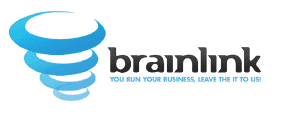NYC’s waterfront is about to change in ways that will ripple through every corner of the city’s construction market. City and state leaders have announced the Brooklyn Marine Terminal (BMT) Vision Plan, a 60‑acre, all‑electric, mixed‑use redevelopment designed to blend housing, jobs, industry, open space, and resilient infrastructure.
Key figures at a glance:
– 6,000 new homes, with one‑third designated affordable
– 28 acres of public open space
– 800,000+ square feet for commercial, light‑industrial, and community uses
– Tens of thousands of construction and permanent jobs
– An all‑electric maritime terminal
– $18B projected economic impact
– Early 2026 targeted for shovels in the ground; $418M in initial funding aligned by city and state
Why this matters to NYC construction firms (especially 30–200 employee shops using Sage 300 CRE):
– Pipeline: Expect multi‑year RFPs, complex phasing, and new specialty subcontracting networks.
– Compliance: Labor, environmental, and community reporting will be more rigorous and data‑driven.
– Electrification: An all‑electric terminal sets a technical baseline for future public and private builds.
– Precision delivery: Real‑time coordination across trades, suppliers, and agencies becomes table stakes.
Context: from post‑industrial to next‑generation waterfront
For decades, the BMT sat at the center of Brooklyn’s maritime story, then drifted as trade patterns and industrial investment shifted. Today’s priorities—affordable housing, resilient open space, sustainable logistics, and high‑impact job creation—align in one plan. This is not merely a port upgrade; it’s a blueprint for integrating a working waterfront with daily urban life.
What’s different this time
– Scale and funding: With city–state alignment and $418M committed up front, momentum is real and near‑term mobilization is plausible.
– Mixed‑use complexity: Residential + commercial + light‑industrial + community uses mean longer windows and layered scopes—opportunities for years.
– Transit and resiliency: Expect tighter integration with transit, bikeways, and flood‑proofing along with environmental performance baked into specs.
The broader NYC signal
Across Manhattan, high‑profile projects—from supertalls to complex mixed‑use towers—are raising the bar on coordination, BIM, prefabrication, logistics, and stakeholder reporting. The standards proven on megaprojects tend to become expectations market‑wide. The BMT plan accelerates that shift for green construction, electrification, and compliance.
Practical moves leaders can make now
– Map the opportunity: Identify scopes where your team can credibly lead or partner (site/civil, MEP electrification, envelope, marine work, offsite fabrication, controls).
– Build your compliance muscle: Standardize document sets (certs, safety, DEI, local hire, environmental logs) and assign clear ownership and SLAs.
– Digitize field‑to‑office: Ensure daily logs, timecards, quantities, RFIs, and photos sync reliably to your back office and job cost.
– Electrification readiness: Skill up on all‑electric systems, energy storage, EVSE, microgrids, and low‑embodied‑carbon materials.
– Schedule and logistics: Pressure‑test plans with scenario modeling for supply chain constraints, staging, laydown, and waterfront access.
– Prequal partners early: Vet subs and vendors for safety record, financial strength, DEI participation, and digital readiness.
– Talent and training: Upskill foremen and PMs on compliance, change management, and integrated project delivery workflows.
Make Sage 300 CRE your advantage
– Standardize cost codes and job structures so estimating, purchasing, field reporting, and job cost align.
– Tighten commitment tracking: Link POs and subcontracts to budget line items; enforce approvals and audit trails.
– Automate compliance packets: Certificates, insurance, lien waivers, certified payroll, and environmental logs tied to vendors and draws.
– Close the loop daily: Mobile field reports flow to cost and production quantities; catch variance early.
– Track equipment and materials: Issue/return, idle time, and location data tied to cost codes.
– Surface insights: Dashboards for WIP, cash flow, committed vs. remaining, labor productivity, and change order status.
Risks to avoid
– Underestimating documentation burden and response times on public or quasi‑public packages.
– Siloed data between field apps and accounting/job cost.
– Informal change management that erodes margin.
– Compliance blind spots (environmental, labor tracking, local hire, DEI) that delay pay apps or disqualify bids.
Timeline and next steps
– 2025: Track RFQs/RFPs, attend info sessions, and align teaming strategies. Pilot improved reporting on current jobs to harden processes.
– Early 2026: Target readiness for mobilization with templates, training, and partner agreements in place.
Bottom line
You don’t have to be the GC at the Brooklyn Marine Terminal to feel its impact. Its standards will shape client expectations, compliance requirements, and technology adoption across NYC. Firms that digitize, document, and deliver with precision—especially those turning Sage 300 CRE into a real‑time decision engine—will be positioned to win.
If you want to see how top NYC contractors are future‑proofing operations with field‑proven Sage 300 CRE workflows, let’s talk.
Reference:
September 2025 United States’ Megaprojects Under Construction (YouTube): https://www.youtube.com/watch?v=AxpRUL4RAY0











